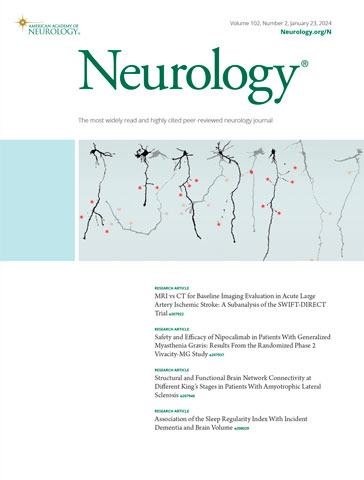Navigation auf uzh.ch
Navigation auf uzh.ch
Heterozygous variants in RAR-related orphan receptor B (RORB) have recently been associated with susceptibility to idiopathic generalized epilepsy. Read this article in full at Neurology

Heterozygous variants in RAR-related orphan receptor B (RORB) have recently been associated with susceptibility to idiopathic generalized epilepsy. However, few reports have been published so far describing pathogenic variants of this gene in patients with epilepsy and intellectual disability (ID). In this study, we aimed to delineate the epilepsy phenotype associated with RORB pathogenic variants and to provide arguments in favor of the pathogenicity of variants.
Through an international collaboration, we analyzed seizure characteristics, EEG data, and genotypes of a cohort of patients with heterozygous variants in RORB. To gain insight into disease mechanisms, we performed ex vivo cortical electroporation in mouse embryos of 5 selected variants, 2 truncating and 3 missense, and evaluated on expression and quantified changes in axonal morphology.
We identified 35 patients (17 male, median age 10 years, range 2.5–23 years) carrying 32 different heterozygous variants in RORB, including 28 single-nucleotide variants or small insertions/deletions (12 missense, 12 frameshift or nonsense, 2 splice-site variants, and 2 in-frame deletions), and 4 microdeletions; de novo in 18 patients and inherited in 10. Seizures were reported in 31/35 (89%) patients, with a median age at onset of 3 years (range 4 months–12 years). Absence seizures occurred in 25 patients with epilepsy (81%). Nineteen patients experienced a single seizure type: absences, myoclonic absences, or absences with eyelid myoclonia and focal seizures. Nine patients had absence seizures combined with other generalized seizure types. One patient had presented with absences associated with photosensitive occipital seizures. Three other patients had generalized tonic-clonic seizures without absences. ID of variable degree was observed in 85% of the patients. Expression studies in cultured neurons showed shorter axons for the 5 tested variants, both truncating and missense variants, supporting an impaired protein function.
In most patients, the phenotype of the RORB-related disorder associates absence seizures with mild-to-moderate ID. In silico and in vitro evaluation of the variants in our cohort, including axonal morphogenetic experiments in cultured neurons, supports their pathogenicity, showing a hypomorphic effect.
Molecular and Phenotypic Characterization of the RORB-Related Disorder. PMID: 38165337 DOI: 10.1212/wnl.0000000000207945 Neurology, 102(2):1-20.
Gokce-Samar, Zeynep; Vetro, Annalisa; De Bellescize, Julitta; Pisano, Tiziana; Monteiro, Laloe; Penaud, Noémie; Korff, Christian M; Fluss, Joel; Marini, Carla; Cesaroni, Elisabetta; Alvarez, Blanca Mercedes; Sanlaville, Damien; Chatron, Nicolas; Arzimanoglou, Alexis A; Labalme, Audrey; Cuddapah, Vishnu A; Ruggiero, Sarah M; Lecoquierre, Francois; Nicolas, Gael; Marie, Guerrot Anne; Lebas, Axel; Testard, Herve O; Helbig, Katherine L; Ruiz, Anna; Ngoh, Adeline; Kurian, Manju A; Reid, Kimberley; Spaull, Robert; Joset, Pascal; Ramantani, Georgia; Steindl, Katharina; et al